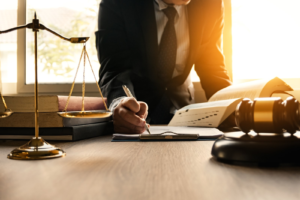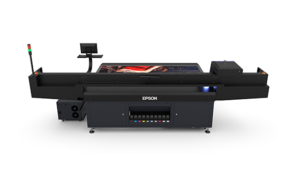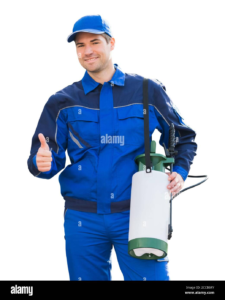You will want to consult a personal injury lawyer if you are injured in an accident. This attorney will help you determine the value of your claim, including past and future medical expenses, lost wages, and noneconomic damages such as pain and suffering. Contact Personal Injury Lawyer Essex County now!
They will also help you gather evidence, negotiate with insurance companies, and prepare for trial if necessary. It is important to keep your personal injury lawyer updated as to any new developments in your case.

A free initial consultation gives individuals a clearer understanding of their legal options without incurring any financial obligation. The consultation offers clients an opportunity to share information about their legal matter with an attorney and assess whether or not they have a valid compensation claim. It is also an opportunity to ask questions and gain insight into the attorney’s approach to handling cases that are similar to your own.
The initial consultation will thoroughly review any available evidence, such as medical records, police reports, and witness statements. The lawyer may also take photographs and video recordings of the scene of the incident if applicable to your case. The consultation is an important first step in determining the viability of your personal injury case and providing a detailed assessment of the legal landscape that will guide your journey.
During this first meeting, it’s critical to bring all the relevant documents and information you have collected. The more thorough the information you bring, the more comprehensive an assessment the attorney can provide. For example, bringing a detailed list of your injuries can help the attorney understand what you are going through and the extent of your damages. It is also a good idea to bring all medical records, including doctor’s notes and digital images from any diagnostic tests you have had. Bringing your insurance policy will help the lawyer determine what types of coverage you have and how that might impact the case.
It’s also a good idea to prepare a list of questions and concerns that you would like to discuss with the attorney. This will allow you to make the most of your time together and ensure that you don’t forget any important issues. In addition, it can be helpful to bring someone with you who can offer support and another set of ears.
During the consultation, you will be asked to recount the details of your accident and your experiences since the incident occurred. This is an important part of the process as it helps to establish your credibility and believability as a client. The lawyer will be able to hear your story and see how you tell it, which will give them an idea of the type of person you might be in court and how best to communicate with your jury.
Evidence Gathering
When people experience an accident in New York City, they often turn to a personal injury lawyer to help them navigate the legal process and obtain financial compensation for their injuries. These attorneys work closely with insurance companies and the at-fault parties to ensure their clients get the financial compensation they deserve.
The first phase of a personal injury case is collecting and examining evidence. This can include witness statements, police reports, surveillance footage and medical records. The goal is to build a strong case that demonstrates that the defendant is responsible for the victim’s injuries.
While this may sound easy enough, a successful personal injury attorney must be able to communicate effectively and understand the intricacies of the law. They must also have the ability to think critically and stay on top of changes in the law that can impact their cases.
Personal injury attorneys are also often responsible for client management, which can be challenging at times. Sometimes, a client will be difficult to deal with or have unrealistic expectations for their case’s outcome. A good personal injury attorney will be able to manage these challenges and keep their client’s spirits high throughout the legal proceedings.
A personal injury case typically begins when a private person (the “plaintiff”) files a civil complaint against another party, such as a person or business (the “defendant”). The plaintiff alleges that the defendant acted negligently or irresponsibly in connection with an accident or injury that caused harm.
There are many types of personal injury claims, such as medical malpractice, product liability and slip and fall accidents. Medical malpractice claims arise when a person’s injury is caused by negligent or substandard medical care. Other common personal injury cases involve car accidents, which are often the result of someone else’s negligence.
As a personal injury attorney, you must have compassion and a desire to serve others. When you represent a person in a personal injury case, you are helping them through one of the most challenging moments of their lives. The fact that you are making a difference in their lives is a great motivating force and can help you to continue your passion for this line of work.
Negotiation
The negotiation process is a critical step in personal injury litigation and one that requires finesse. Your lawyer functions as your advocate, leveraging strategic arguments backed by irrefutable evidence to fortify your position and secure a settlement that aptly compensates you for the gamut of damages you’ve incurred.
When you are ready to negotiate, your attorney will first compile a comprehensive demand package that outlines the extent of your injuries, medical expenses, lost wages, pain and suffering, and other applicable damages. This meticulously prepared document serves as the linchpin of your negotiations with the opposing party and their insurance representatives.
At this stage, the opposing parties may begin a back-and-forth process of offers and counteroffers to settle your case out of court. Your personal injury attorney is seasoned in these negotiations and adept at defusing hostile situations, guiding the conversation towards an amicable resolution that maximizes your settlement.
Throughout the negotiation process, your personal injury lawyer will continuously evaluate and discuss all aspects of your claim. They will review wage statements to calculate your missed bonuses, benefits, and paid time off work, as well as use your physician’s records to substantiate the necessity of each medical treatment and associated costs.
Insurers will sometimes try to discredit your claims by disputing your testimony or arguing that medical treatments weren’t related to your injury, or that the cost of a specific treatment is unreasonable. Your personal injury lawyer will be able to firmly and effectively counter these defense tactics with their vast experience in similar cases, bolstering your case’s credibility.
Depending on your situation, it may be necessary to file a lawsuit against the liable party. Your personal injury lawyer will evaluate this option with you, and if they determine that it’s in your best interests to proceed with a lawsuit, they will prepare all the necessary documentation required for filing. They will also work to secure expert witnesses to support your case, if needed. Litigation can be a long and costly process, and it is important to consult an experienced personal injury lawyer to ensure your rights are protected.
Trial
After determining the full extent of your damages, including your medical bills, lost wages, and other expenses, your attorney will work to get you maximum compensation from the responsible party or insurance company. This may involve negotiation and settlement talks, as well as taking the case to trial.
A personal injury trial is a legal proceeding in which the plaintiff (your lawyer) and defendant (the person or business responsible for your injuries) present evidence and arguments to a judge or jury. The judge or jury will then issue a verdict, which determines whether the defendant is liable and how much you are entitled to receive for your damages.
In some cases, both parties will want to settle the lawsuit outside of court. To facilitate this, the judge in your case may order settlement conferences or mediation sessions. Your personal injury lawyer will represent you during these proceedings, working to achieve a favorable out-of-court settlement.
Your personal injury lawyer will analyze the strength of your case, evidence presented during the discovery phase, and possible outcomes of going to trial in order to advise you of your best course of action. This is important, as it helps to ensure that any settlement offers you receive reflect the true value of your damages.
During the pretrial period, your lawyer will interview you and request all documentation related to your accident and injuries. This includes witness statements, medical records, and any other documentation that may be relevant to your claim.
Your lawyer will also negotiate with the defendant’s lawyers, attempting to resolve your case out of court. They may use various tools during the discovery process, such as interrogatories, requests for production, subpoenas, and depositions. They will try to gather as much evidence as possible to support your claims.
If your lawyer is unable to reach a settlement, the case will go to trial. During this time, your lawyer will call witnesses, introduce evidence, and make persuasive arguments to persuade the jury that the defendant is liable for your injuries. The closing arguments are the final opportunity for both sides to summarize their case and convince the jury to rule in their favor.



